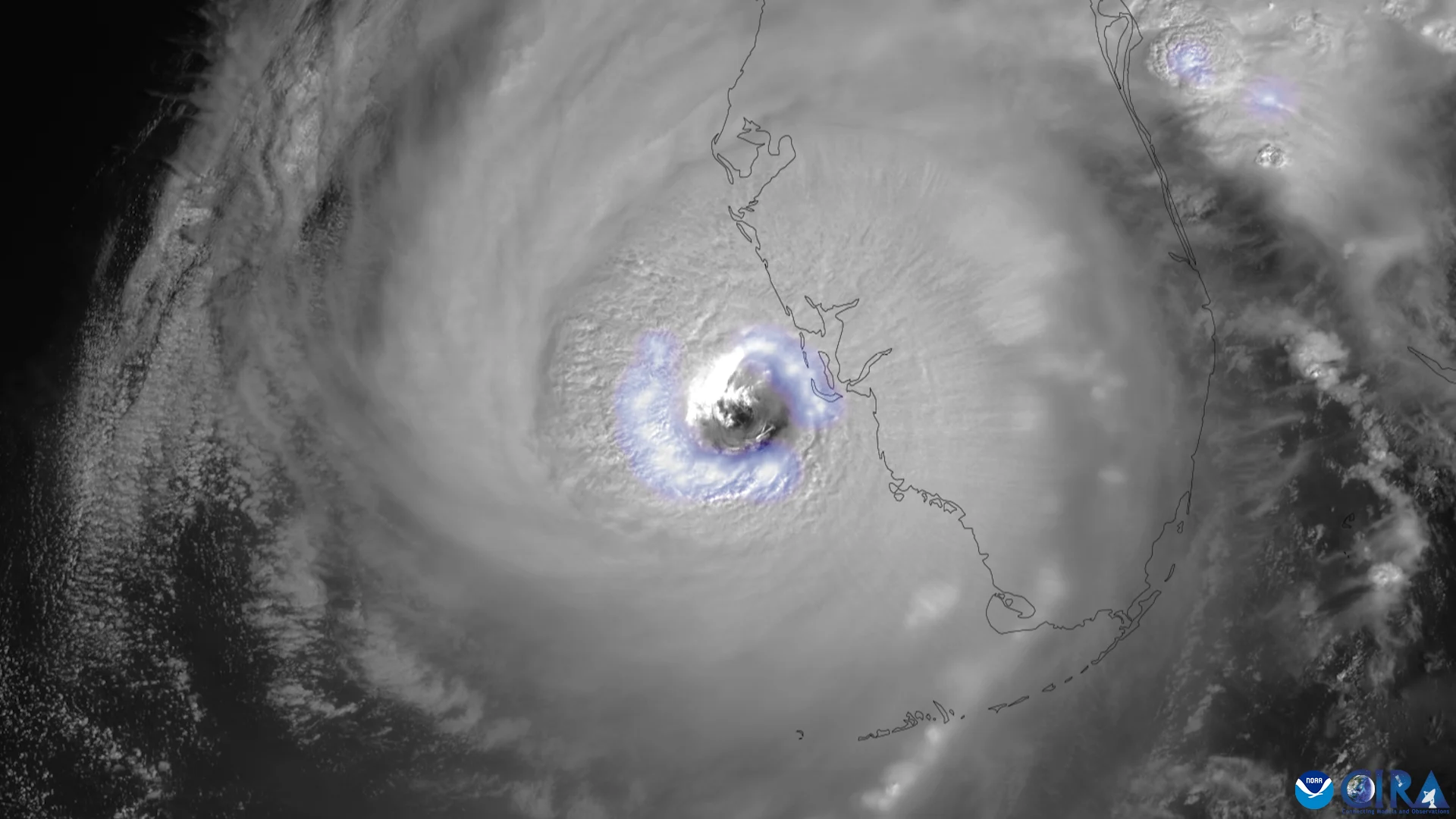
Uncertainty swirls around 2023 hurricane season as El Niño looms
Colorado State University’s first look at the 2023 Atlantic hurricane season calls for a slight slowdown, but uncertainty abound as a potential El Niño looms.
A potential El Niño brewing in the Pacific Ocean could put the brakes on this year’s Atlantic hurricane season.
Leading hurricane experts at Colorado State University (CSU) released on Thursday their first look at the potential for tropical cyclone activity during the upcoming season.
The news highlights the interconnected nature of our atmosphere, where seemingly small changes in one part of the world can have reverberations felt thousands of kilometres away.
DON’T MISS: Heat incoming? Two ways El Niño could affect Canada’s summer
Forecast calls for slightly below-average season
An average Atlantic hurricane season will see 14 named tropical storms, seven of which grow into hurricanes, and three of those systems going on to achieve major hurricane status.
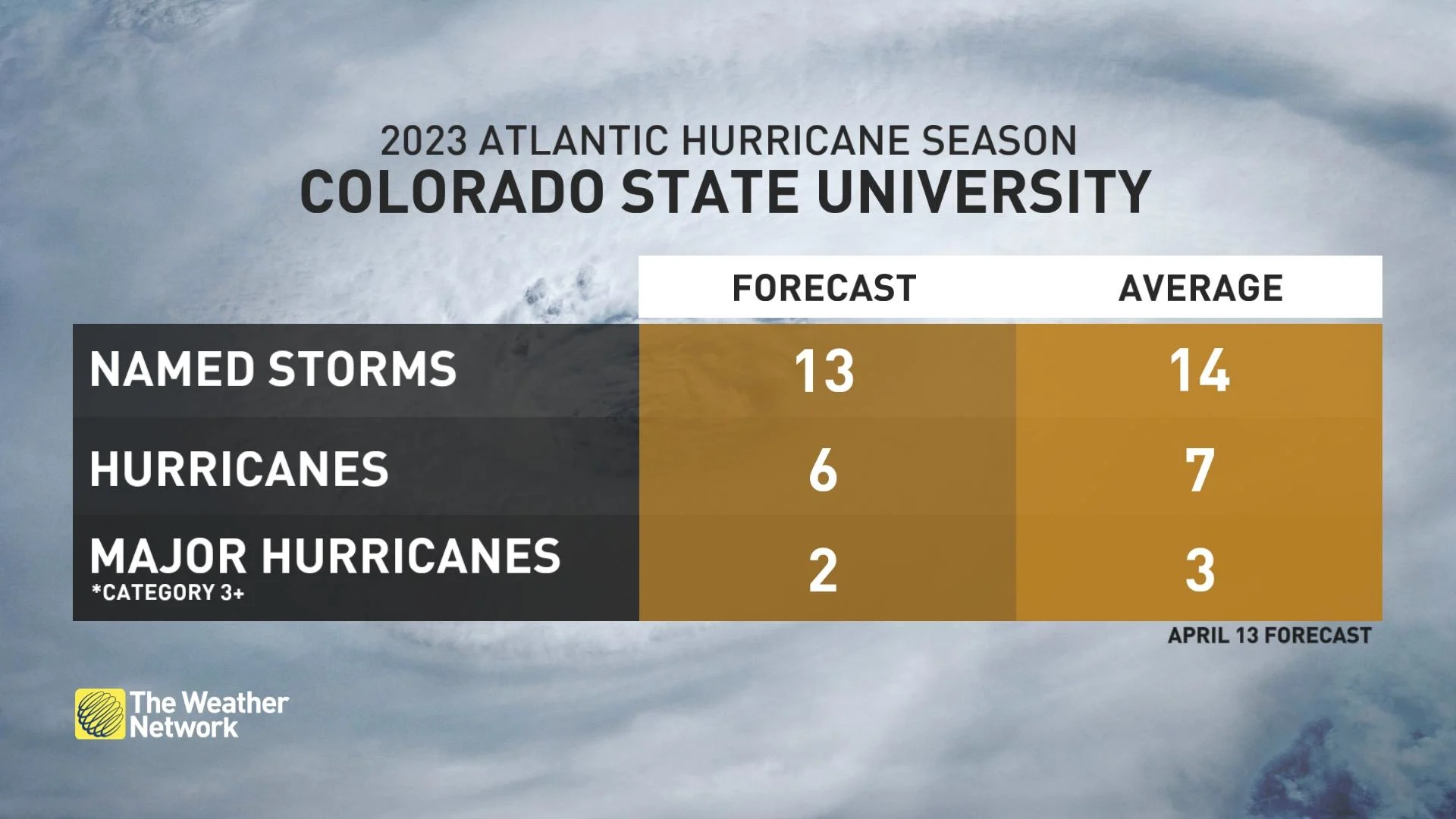
CSU’s official forecast calls for the 2023 Atlantic hurricane season to come in around 80 percent of average compared to all hurricane seasons over the past 30 years, or just slightly below seasonal. This roughly equates to 13 named storms, six hurricanes, and two major hurricanes.
Forecasters stressed that there’s “large uncertainty” in this initial outlook, mostly due to the greatest unknown: El Niño.
El Niño is a pattern of warmer-than-normal sea surface temperatures in the eastern Pacific Ocean near the equator. This warmup can have a profound effect on the atmosphere—including increased wind shear flowing east over the Atlantic Ocean.
Wind shear is destructive to a budding tropical cyclone. A system needs robust and persistent thunderstorms in order to develop a low-pressure centre at the surface. Too much wind shear can blow the tops off of those thunderstorms and stop them in their tracks, preventing a tropical system from organizing and strengthening.
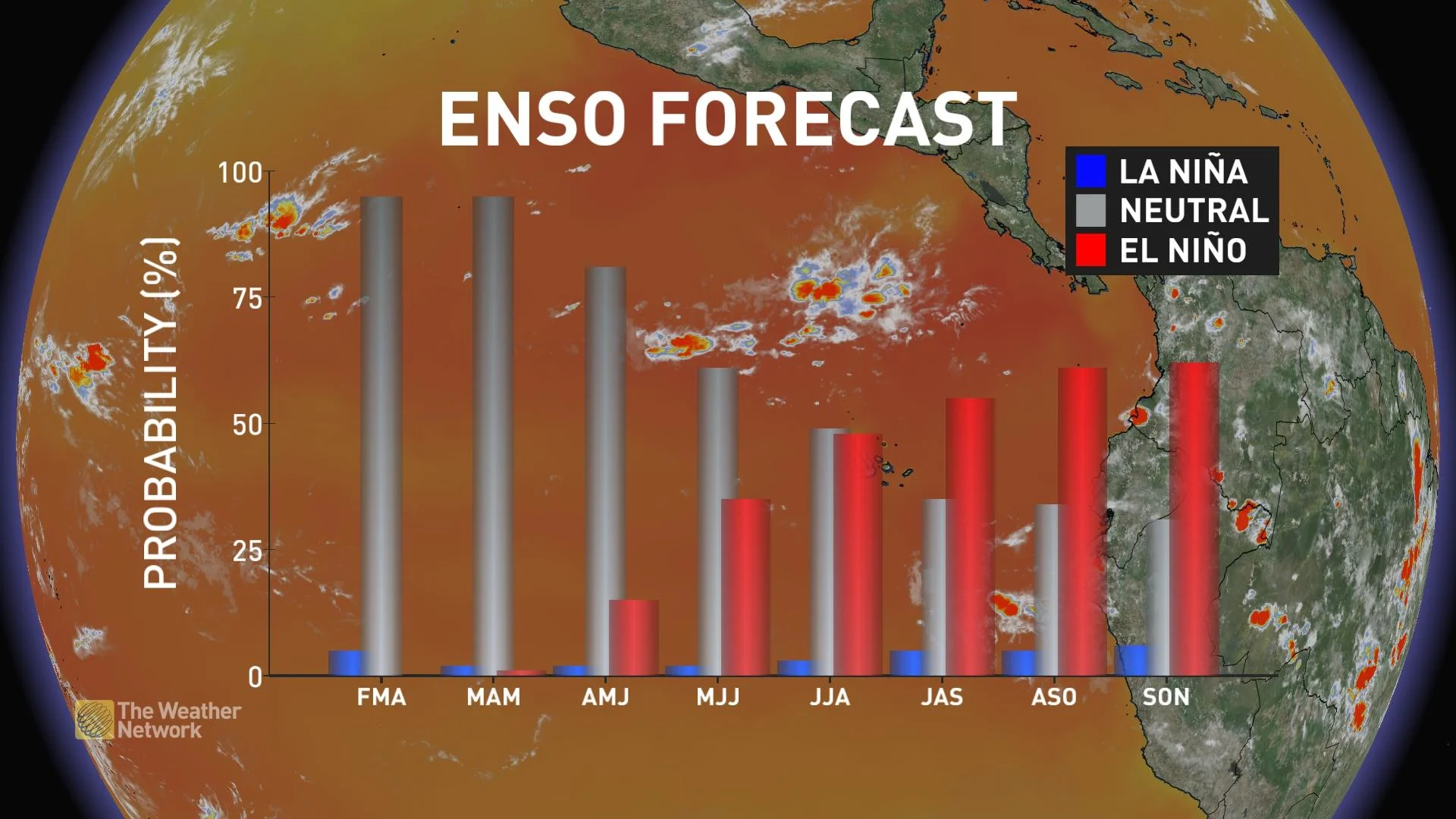
However, the onset of an El Niño can be difficult to predict. Forecasters with the U.S. Climate Prediction Center (CPC) currently see greater than 50 percent odds of El Niño developing around the peak of hurricane season.
If we see a slower or even no transition to El Niño, the CSU experts said, we could contend with an active Atlantic hurricane season given that waters in the Atlantic itself are unusually warm this spring—and that’s before the summer sun has a chance to warm them up even further.
Even one storm can make for a bad season
A season that produces fewer tropical systems than normal can still be exceptionally dangerous for any communities in the path of one of those storms.
Case in point: CSU’s outlook notes that the 2022 Atlantic hurricane season came in around 75 percent of average, yet it still produced two destructive hurricanes.
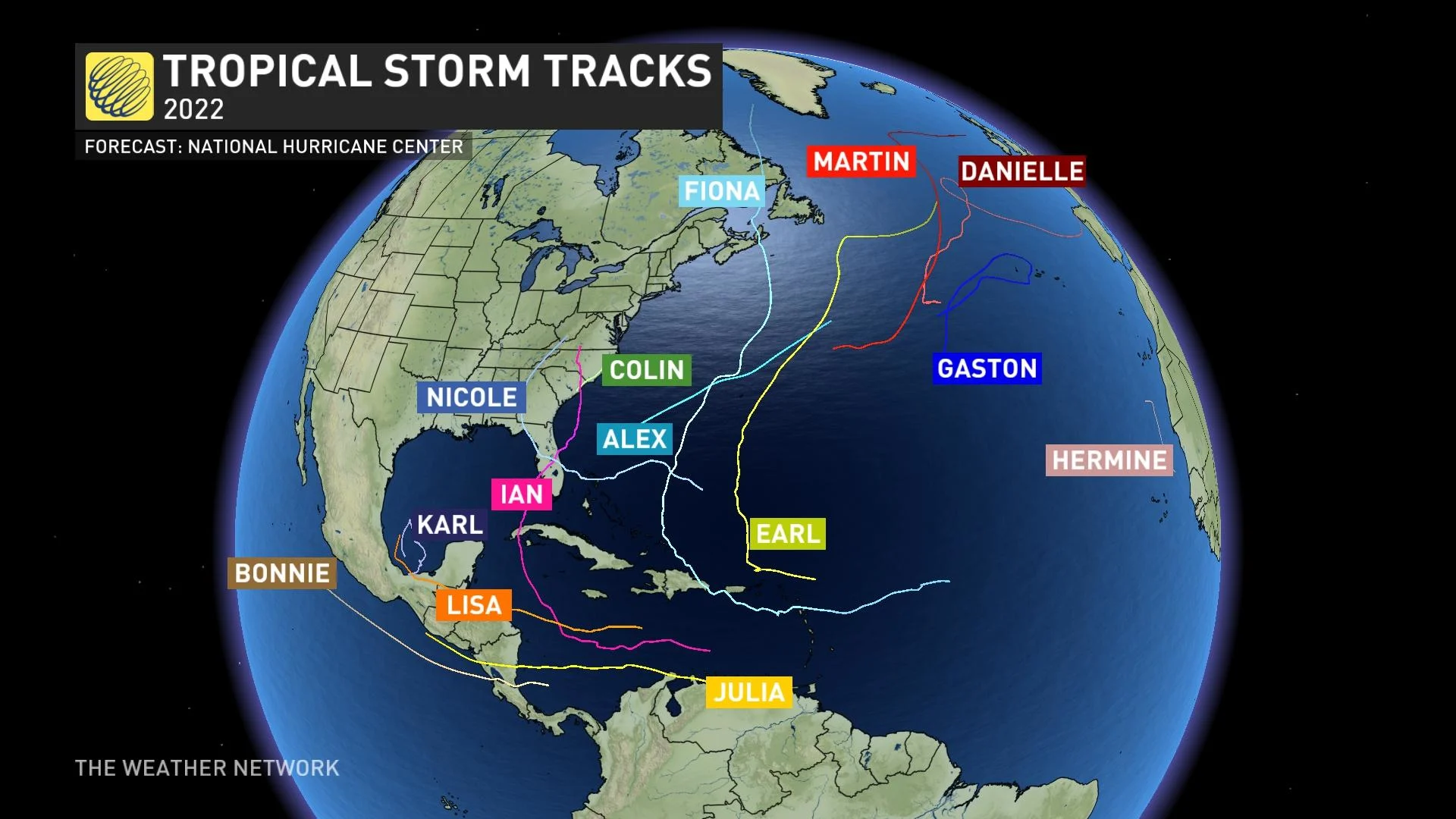
DON’T MISS: Fiona and Ian retired as hurricane names after devastating storms
Hurricane Fiona hit Atlantic Canada as the region’s costliest weather disaster on record. Hurricane Ian hit Florida Near scale-topping intensity, killing more than 100 people in the state’s largest hurricane-related loss of life in nearly a century.
One tropical system is too many for folks in harm’s way. Residents along and near the coast should always prepare for a hurricane season regardless of seasonal outlooks, keeping in mind that even weak storms can unleash destructive flooding and long-lasting power outages.
WATCH: Heat incoming? El Niño could affect Canada's upcoming summer
Atlantic hurricane season ‘officially’ begins June 1
The Atlantic hurricane season runs from June 1 to November 30, a six-month period that hosts the vast majority of the basin’s tropical activity.
Storms are certainly possible before and after those two dates. We recently witnessed a record seven-year run between 2015 and 2021 that saw the year’s first named storm form before June 1.
Tropical cyclone activity in the Atlantic Ocean generally follows a predictable pattern each year.
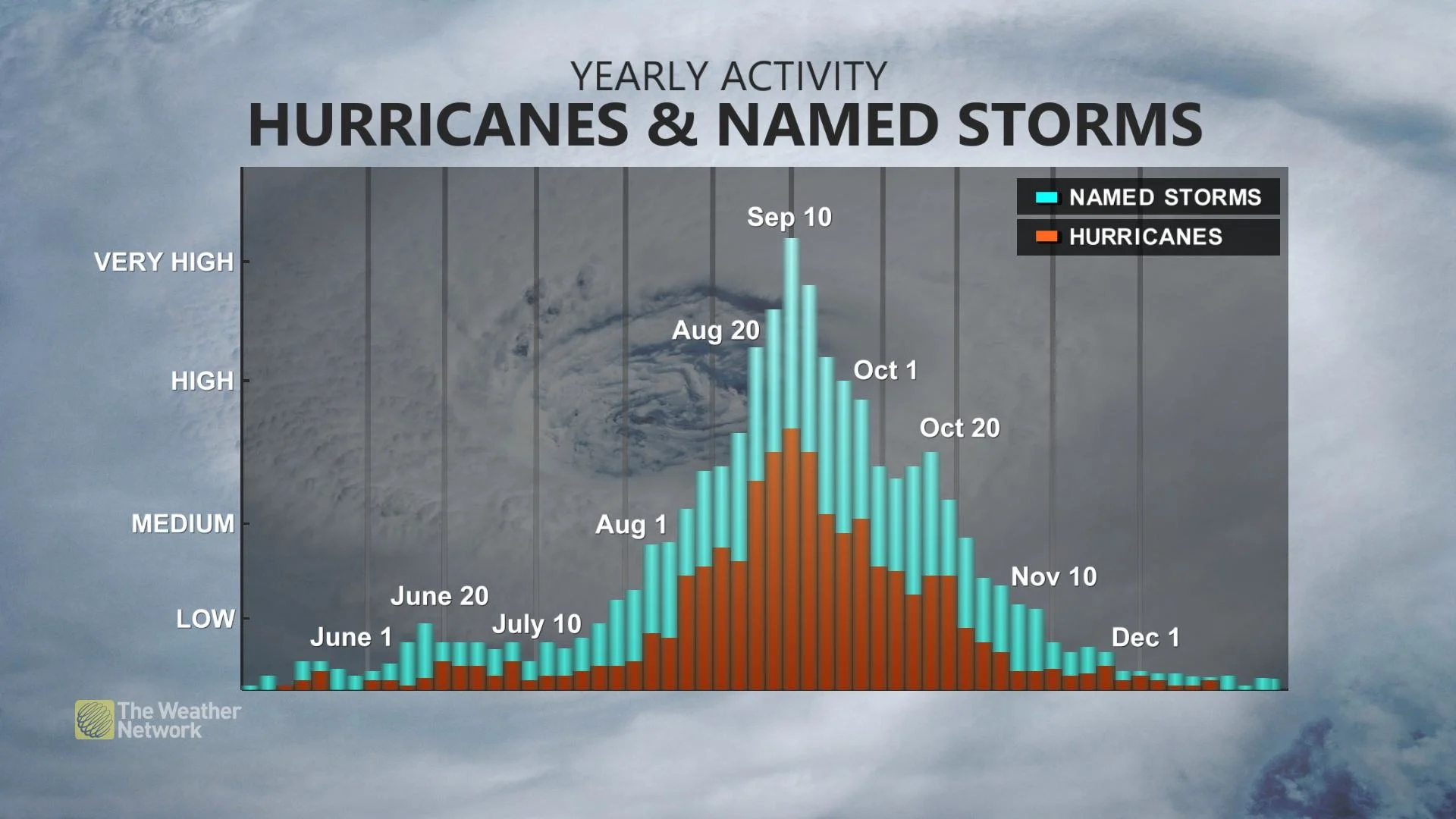
Storms form closer to North America in the late spring and early summer, with activity bubbling farther east toward Africa as the ocean warms and the atmosphere grows more hospitable to storm development.
MUST SEE: The curse of storm nine: Why so many “I” hurricanes are monsters
The peak of hurricane season arrives by the second week of September, when summer-steeped ocean waters combine with a calm and moist atmosphere to allow tropical storms and hurricanes to flourish.
Activity then trails off through the fall as ocean temperatures wane and the atmosphere grows hostile to tropical formation.
The first three tropical storms this year will be named Arlene, Bret, and Cindy, drawing from the list of Atlantic hurricane names last used in 2017.

Thumbnail image courtesy of CIRA/CSU/NOAA.










